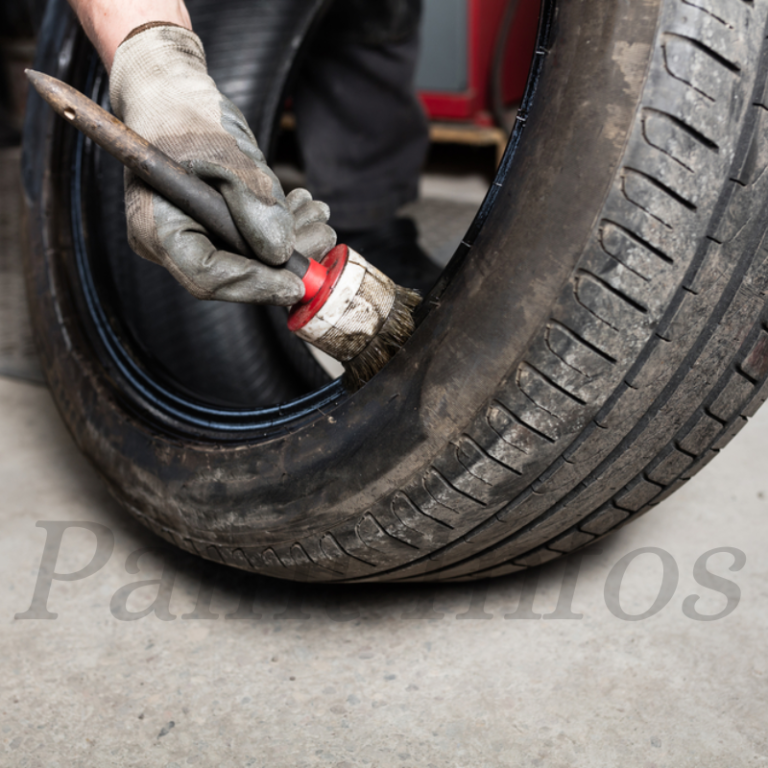With the warmer weather finally here, it’s the perfect time to start thinking about giving your car a new paint job. But before you break out the brushes and get to work, there are a few things you need to consider – like whether or not it’s actually possible to paint a car outside.
Turns out, painting a car outside is definitely doable, but there are a few things you need to take into account first.
For one, make sure you have plenty of ventilation so that you don’t end up breathing in fumes from the paint. You’ll also want to make sure the surface you’re painting on is clean and smooth – any dirt or debris will show through once the paint dries. And finally, be prepared for a bit of a mess – painting a car is always going to be messy no matter where you do it.
- Park the car in a well-ventilated area and cover any areas that you don’t want painted with a tarp or drop cloth
- Clean the surface of the car with a degreaser or all-purpose cleaner to remove any dirt, grime, or oils that could prevent the paint from adhering properly
- sand the surface of the car with fine-grit sandpaper to create a smooth base for the paint to adhere to
- Apply a primer to the car’s surface if desired
- This will help improve paint adherence and provide a more even appearance once painting is complete
- Paint the car with an automotive paint designed for use on cars
- Use multiple thin coats rather than one thick coat for best results
- Allow each coat of paint to dry completely before applying the next one
- Finish up by applying a layer of clearcoat over top of the color coats
- This will protect your new paint job from UV damage and weathering
What is the Best Time to Paint a Car Outside?
Assuming you would like tips for painting a car outdoors:
1. Pick a day with low humidity and little chance of rain or dew.
2. Ideally, the temperature should be between 50-70 degrees Farenheit.
3. Make sure to clean the surface of the car before painting it. This means washing it and then sanding down any areas that are rusty or flaky.
4. Once the surface is prepped, start by painting the car’s trim first.
Then move on to painting the main body of the car.
5. Use several thin coats of paint rather than one thick coat in order to avoid runs or sagging paint.
6. Allow each coat of paint to dry completely before applying the next one.
Can You Paint a Car in the Sun?
You can paint a car in the sun, but there are a few things to keep in mind. First, the temperature can cause the paint to dry too quickly, which can lead to problems with adhesion and bubbling. Second, UV rays can degrade the quality of the paint over time.
So it’s important to use a high-quality paint that is designed for outdoor use. Finally, you’ll need to be careful about painting in direct sunlight, since it can cause problems with visibility.
Can You Paint Exterior of Car?
If you’re considering painting your car’s exterior, there are a few things you need to keep in mind. First, you’ll need to choose the right paint. There are three basic types of automotive paint: enamel, lacquer, and urethane.
Enamel is the most durable and longest lasting type of paint, but it can be difficult to work with. Lacquer is easier to apply but doesn’t last as long. Urethane is a good compromise between the two.
Once you’ve selected your paint, you’ll need to prep the surface of your car. This means sanding down any existing paint or primer, filling in any dents or scratches, and making sure the surface is clean and smooth. If you don’t prep the surface properly, the new paint won’t adhere correctly and will likely peel off over time.
Once the surface is prepped, you can start painting. Begin by applying a basecoat of primer evenly across the entire car. Once the primer is dry, start painting on thin layers of color until you build up to the desired opacity.
Be sure to allow each layer of paint to dry completely before adding another; otherwise, the new layer will just end up ruining the previous one. Finally, add a clearcoat layer for protection against UV rays and weathering.
Painting your car’s exterior can be a great way to give it a fresh new look without spending a lot of money on professional services.
Just be sure to take your time and do it right for best results!
What Temperature Can You Paint a Car Outside?
Most people believe that you can only paint a car in a garage because of the fear that the paint will not dry correctly if it is too cold outside. However, as long as the temperature is above 50 degrees Fahrenheit, you should be fine to paint your car outdoors.
Can You Paint Your Car in the Sun
Yes, you can paint your car in the sun. In fact, many people do just that. The sun can actually help to dry the paint faster than if you were to paint in the shade.
Just be sure to keep an eye on the temperature and make sure it’s not too hot or else the paint will start to bubble.
How to Paint a Car With Spray Cans
Painting your car with spray cans may seem like a daunting task, but it is actually quite simple! Just follow these easy steps and you’ll have a beautiful new paint job in no time.
1. Begin by sanding down the entire surface of your car.
This will help the new paint to adhere better and create a smooth finish.
2. Next, wipe down the car with a clean cloth to remove any dust or debris.
3. Once the car is clean and dry, tape off any areas that you don’t want painted.
This includes trim, windows, and mirrors.
4. Now you’re ready to start painting! Begin by spraying on a thin layer of primer, then let it dry for about 30 minutes before moving on to the color coat.
Be sure to hold the can about 10 inches away from the surface as you spray, and apply even strokes for best results.
5. Let the color coat dry for at least 2 hours before applying a clearcoat sealer. This will protect your new paint job and make it shine!
What Do You Need to Paint a Car
Assuming you would like a blog post discussing what is necessary in order to paint a car:
In order to paint a car, you will need some supplies. These include sandpaper, primer, paint, and clear coat.
You will also need a few tools, such as a drill, screwdriver, and socket wrench set. Finally, you will need access to a workspace where you can safely work on the car.
The first step is to prep the car for painting.
This means sanding down the surface of the car so that the primer and paint will have something to adhere to. You will want to use different grades of sandpaper depending on how smooth or rough the surface of your car is. Once you have finished sanding, you will want to wipe down the entire car with a damp cloth to remove any dust or debris.
Next, it’s time for primer. Primer provides a barrier between the metal of the car and the paint itself. It also helps fill in any imperfections in the surface of the car so that your final product has a smooth finish.
When applying primer, be sure to follow directions on how long it needs to dry before moving on to painting. Generally speaking, however, you should wait at least 24 hours before painting over primer.
Now it’s time for paint!
Paint comes in many different colors and finishes (glossy, matte), so be sure to choose one that suits your taste and desired look for the car. Also keep in mind that certain colors may require more than one coat for even coverage. Once again, be sure to follow directions regarding drying times before applying additional coats or moving on to clear coatings.
Depending on both temperature and humidity levels where you are working, this could take anywhere from several hours up to overnight.”
After your final coat of paint has dried completely (overnight is best), it’s time for clear coatings! Clear coating protects your newly painted vehicle from UV rays and other elements that could damage it over time such as rocks or road debris kicked up while driving . It also gives your vehicle’s paint job an extra shine! Be sure not apply too thick of a layer – follow directions provided with your product . Allowing sufficient drying time between coats is important , as well – usually around 4-6 hours .
How to Spray Paint a Car Professionally
Spray painting a car is not as simple as spraying paint on the surface. If you want a professional looking job, there are a few things you need to do first. The most important thing is to prepare the surface of the car by sanding it down and cleaning it thoroughly.
This will help the paint adhere better and create a smoother finish.
Once the surface is prepped, you can start spray painting. Use thin, even coats and make sure to keep the can moving so that you don’t end up with any drips or runs.
Let each coat dry completely before adding another. Once you’re finished, add a clear coat to protect the paint job and give it a glossy finish.
Conclusion
Can You Paint a Car Outside?
It’s possible to paint a car outside, but there are some things you need to take into consideration first. For example, the type of paint you use will be different than if you were painting inside because it needs to be able to withstand the elements.
You also need to make sure that you have a good ventilation system in place so that fumes don’t build up and cause problems. Finally, you need to protect any surfaces nearby from overspray. With a little planning, painting a car outside can be done successfully.


